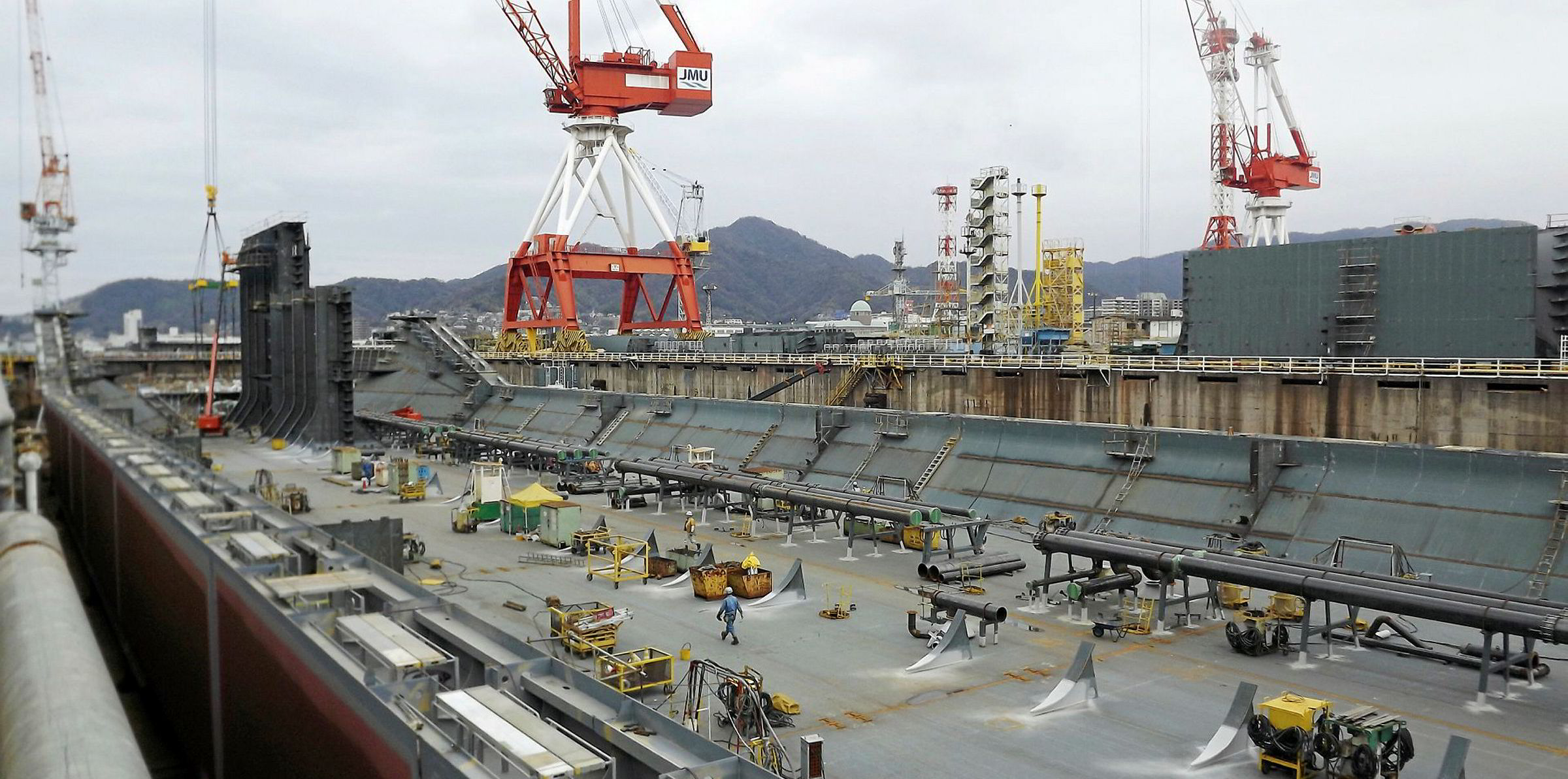Japanese shipowner NYK Line and shipbuilder Japan Marine United (JMU) have struck a deal to assess newbuildings' propulsion performance on the basis of actual sea conditions.
Shipbuilding contracts typically guarantee vessel speed by confirming the relationship between the rate of knots and horsepower in calm seas.
But NYK said calm conditions are rare during commercial voyages, and stormy weather is often encountered.
Heavy seas require more horsepower due to hull shaking and increased resistance.
Various factors come into play, such as wind direction, wind speed, wave height, wave direction, tidal current, ship speed and type, displacement and loading condition, NYK said.
Technology improvements
Now, with the improvement of satellite communications at sea and the progress of internet of things technology, it has become possible to efficiently collect a variety of useful information, the company added.
"After a ship goes into service, we will collect necessary data for a certain period of time, verify the data, and confirm the degree of achievement of the guarantee," NYK said.
This is difficult to carry out in a limited sea trial at the shipyard, the company added.
Findings will also be used to improve designs in the future.
Feedback cycle
"Through many years of joint research between NYK Line and JMU, in addition to a common understanding of data processing, storage, analysis methods, etc, the two companies have established a cycle of feeding back obtained knowledge on design for the next new ship to continually improve performance," NYK said.
JMU yards are building a capesize bulker and a tug for NYK.
This week, NYK made an upward revision of its profit forecast as boxship markets improved, while admitting it faces an ¥18bn ($170m) extraordinary loss through the early termination of long-term capesize bulker charter contracts.
The company predicted its operating profit in the six months to 30 September will be ¥15bn, compared with an earlier forecast of break-even. The company said its net profit would be ¥18bn compared with the earlier forecast of ¥9.5bn.





